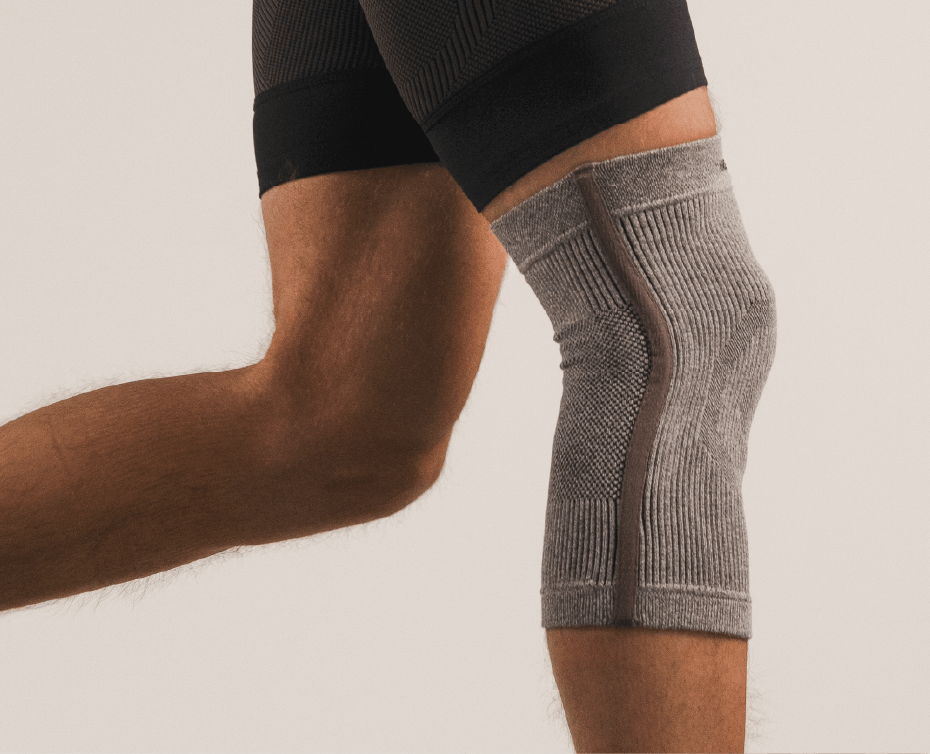Medically Reviewed By | Johannah Gregg, DNP FNP-C
Medial ankle sprains, a frequent concern among athletes, can dramatically hinder performance and elongate recovery times. For an athlete, any injury, no matter how minor, can become a significant physical and mental setback.
That said, what if there were a path to quicker recovery, one rooted in innovative technology and a dedication to natural healing? That’s where Incrediwear comes in.
Incrediwear is grounded in a unique technological approach that goes beyond conventional methods, aiming to support the body's own healing mechanisms. As we delve into the intricacies of medial ankle sprains and their impact, we'll also uncover how Incrediwear stands as a beacon of hope for athletes aiming for an expedited return to their peak performance.
What Are Medial Ankle Sprains?
The ankle, a complex assembly of bones, ligaments, and tendons, is particularly susceptible to injuries, especially in sports with high-intensity movements. A medial ankle sprain occurs when the deltoid ligament on the inner side of the ankle is overstretched or torn. This ligament's primary function is to resist excessive eversion, or outward turning, of the foot.
Common causes of medial ankle sprains include abrupt shifts in direction, improper landings from jumps, or even the unfortunate misstep on uneven ground. Athletes participating in basketball, soccer, and tennis often find themselves at a higher risk due to the dynamic nature of these sports.
The immediate aftermath of such an injury typically presents with swelling, discomfort, and a limited range of motion. If not addressed promptly and appropriately, a medial ankle sprain can evolve into chronic pain, instability, or recurrent sprains, further compromising an athlete's performance and longevity in their respective sport.
What Movements Lead to Medial Ankle Sprains?
The complexity of human movement, especially in sports and high-intensity activities, inevitably leads to situations where injuries like medial ankle sprains can occur.
Several specific movements have been identified as primary culprits:
- Abrupt Directional Changes: In sports like soccer and basketball, athletes frequently make sudden cuts and shifts. These quick changes can exert unexpected stress on the medial side of the ankle, leading to sprains.
- Missteps and Uneven Terrain: Traversing irregular surfaces, like hiking trails or even stepping off a curb wrongly, can force the foot into excessive eversion, challenging the deltoid ligament.
- Jumping and Landing: In volleyball or basketball, improper landings post-jump can place undue strain on the inner ankle. If the foot lands awkwardly or is rolled inward, the risk of a medial sprain increases.
- Overstretching in Dance and Gymnastics: Movements that involve extreme foot positions can overstretch the medial ligaments. Ballet, with its pointed and flexed foot positions, is a notable example.
- Collisions: In contact sports, direct blows to the outer ankle can push the foot inward, causing strain to the medial ligaments.
Understanding these motions and being conscious of them can help athletes train more safely and take preventive measures, mitigating the risk of medial ankle sprains.
What Is the Impact on Sports Performance of Medial Ankle Sprains?
Medial ankle sprains, while seemingly localized, can have a cascading effect on an athlete's entire performance. First and foremost, the physical limitations become evident.
A compromised ankle restricts agility, pivot movements, and overall speed, essential attributes in almost all sports. There's also the challenge of weight-bearing. Activities such as running, jumping, or even a simple jog become a source of discomfort.
Equally crucial is the psychological toll. Athletes, apprehensive about re-injury, might instinctively hold back, compromising their natural playstyle. This hesitation can manifest as reduced aggression on the field, tentative movements, and a reluctance to push boundaries.
Over time, this apprehension could potentially solidify into a mental block, deeply affecting their confidence and competitiveness.
What Is Incrediwear's Solution to Faster Recovery?
Incrediwear, at its core, does not just offer more recovery tools. It represents a revolution in technology. By incorporating semiconductor elements within its fabric, Incrediwear takes a leap beyond traditional methods.
When this unique fabric is stimulated by body heat, it releases negative ions. These ions are not just passive elements; they actively stimulate cellular vibrations that support blood flow and speed.
So, how does this benefit an injured athlete? Healthy blood flow translates to oxygen and vital nutrients being directed toward the injured area.
This not only soothes discomfort but also supports recovery. Imagine an environment where cells are given the optimal conditions to heal, supported by a constant supply of what they need most.
Furthermore, Incrediwear stands distinct from compression products. While compression focuses on providing external pressure, Incrediwear empowers the body's intrinsic healing mechanisms. The result is a more natural, effective, and supported healing process, allowing athletes to regain their form and confidence.
For those battling with medial ankle sprains or any injury, for that matter, Incrediwear offers hope and a promise of a swift return to the field with the Ankle Sleeve.
How Does Incrediwear Outpaces Traditional Recovery Methods?
In the competitive arena of sports and daily life, injuries can be daunting setbacks. Traditional recovery methods often offer temporary relief. Incrediwear, however, redefines the healing paradigm, emphasizing recovery and a holistic healing process.
With its semiconductor technology, it goes beyond the surface, activating cellular responses that support natural healing. As athletes and individuals strive for swift returns to peak performance, Incrediwear stands out as the beacon guiding the way.
By embracing this innovative approach, one not only recovers but also flourishes, reclaiming their life and game with renewed vigor.
Wrapping Up
Medial ankle sprains, while common, can significantly hamper performance. Recognizing specific risk movements is crucial. With technological advances like Incrediwear, athletes have innovative tools to support recovery.
Awareness and preventive measures remain essential in ensuring prolonged, injury-free engagements in sports and high-intensity activities.
Sources:
Ankle: Anatomy & How It Work | Cleveland Clinic
Deltoid ligament of the ankle | Radiology Reference Article | Radiopaedia.org
Chronic Ankle Instability – Ankle Sprains | Foot Health Facts
Read more

Medically Reviewed By | Johannah Gregg, DNP FNP-C Walking is the most foundational form of exercise and a day-to-day necessity. For many, though, lower back pain is a big reason to take a break fro...

Medically Reviewed By | Johannah Gregg, DNP FNP-C Recovery from back pain can be strenuous for athletes and non-athletes. The two main causes of consistent back pain among athletes are repeated hyp...






Leave a comment
All comments are moderated before being published.
This site is protected by hCaptcha and the hCaptcha Privacy Policy and Terms of Service apply.